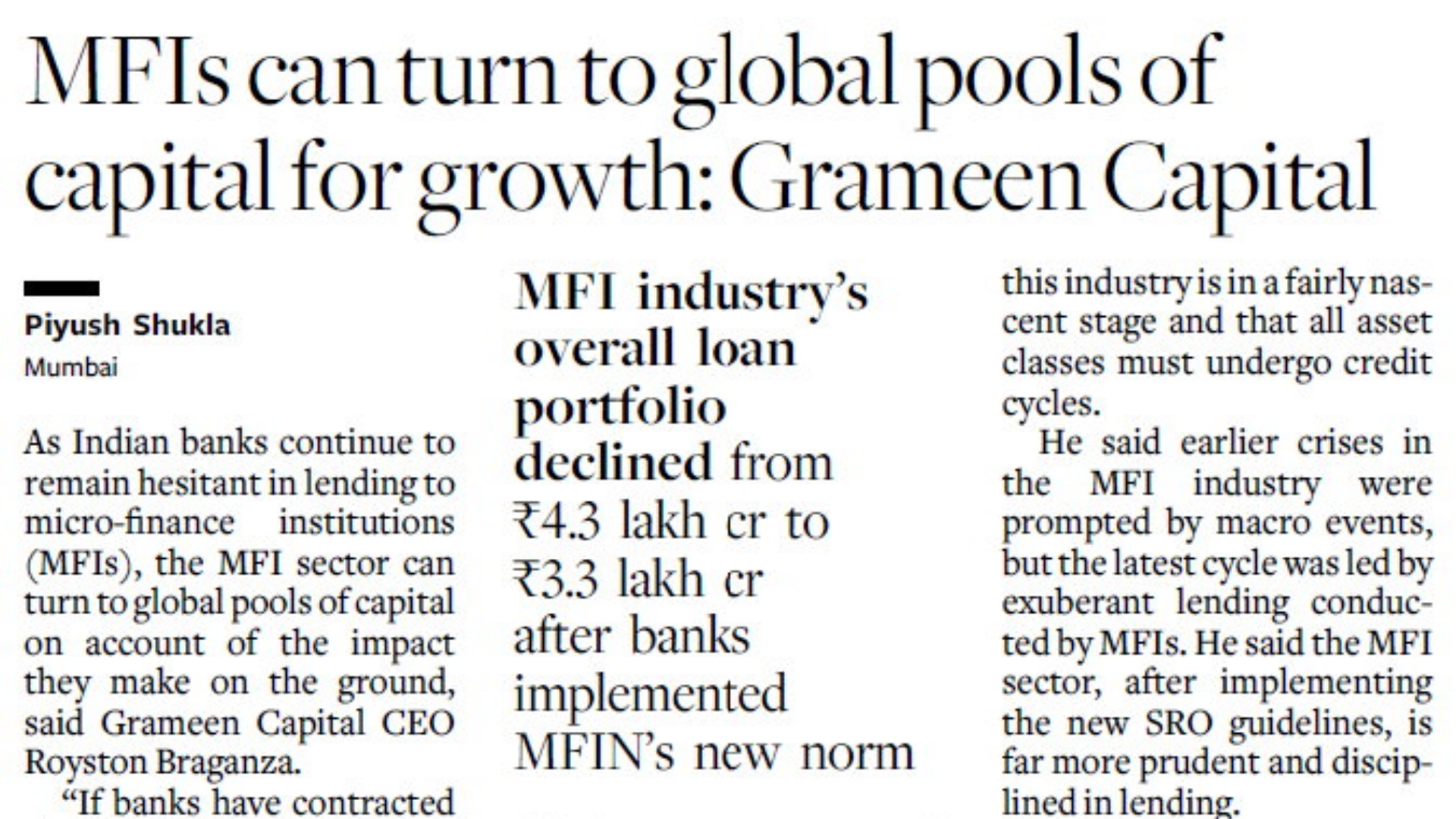As Indian Banks Pull Back, MFIs Look to Global Capital Pools for Growth
As Indian banks continue to remain hesitant in lending to microfinance institutions (MFIs), the MFI sector can turn to global pools of capital on account of the impact they make on the ground, said Grameen Capital CEO Royston Braganza.
“If banks have contracted their lending to MFIs, then how are you going to expect MFIs to grow out of [the previous credit cycle]? There is tremendously good news coming in. Cycle after cycle for the last quarter, we are seeing improved credit quality. We have imposed new guidelines that disallow lending to borrowers with more than three loans; we have self-regulated ourselves as a sector…,”
“MFIs and NBFCs are struggling to raise money from banks. But there could be global pools of capital that will be very interested because of the impact these entities create on the ground. So, bringing in those global impact investors [will aid growth]. We talked earlier about the lack of depth in capital and bond markets. Why aren’t we looking at impact bonds or other ways to raise those funds?”
The MFI industry’s overall loan portfolio declined from ₹4.3 lakh crore to ₹3.3 lakh crore after lenders implemented the MFIN’s new guideline.
MFIN is the self-regulatory organization of the MFI sector, and earlier this year, it introduced additional guardrails after MFIs saw a sharp rise in bad loans on account of over-leveraging of clients. However, Braganza said this industry is in a fairly nascent stage and that all asset classes must undergo credit cycles.
He said earlier crises in the MFI industry were prompted by macro events, but the latest cycle was led by exuberant lending conducted by MFIs. He added that the sector, after implementing the new SRO guidelines, is now far more prudent and disciplined in lending.
Housing Growth Potential
Separately, Sachinder Bhinder, MD and CEO of Aavas Financiers, said India’s mortgage-to-GDP ratio continues to be around 13–14%, and if one excludes Tier-1 and Tier-2 cities, the ratio is in single digits.
Accordingly, with higher highway penetration and road construction, there is immense scope for home loan growth in the country, he said.
“We have 16% [of borrowers] new to credit, and 92% are new to mortgages. These are first-time home buyers, or those using their property as a mortgage.”
Explore More Insights
For deeper understanding of lending cycles, financial inclusion, and strategic capital mobilisation, explore market perspectives from
Ranjit Jha (CEO)
— known for bridging research, trust, and long-term financial strategy.
To explore how Rurash Financials
supports institutions and investors with credit analytics, fixed-income solutions, and impact-driven investment strategies, visit the official website.

